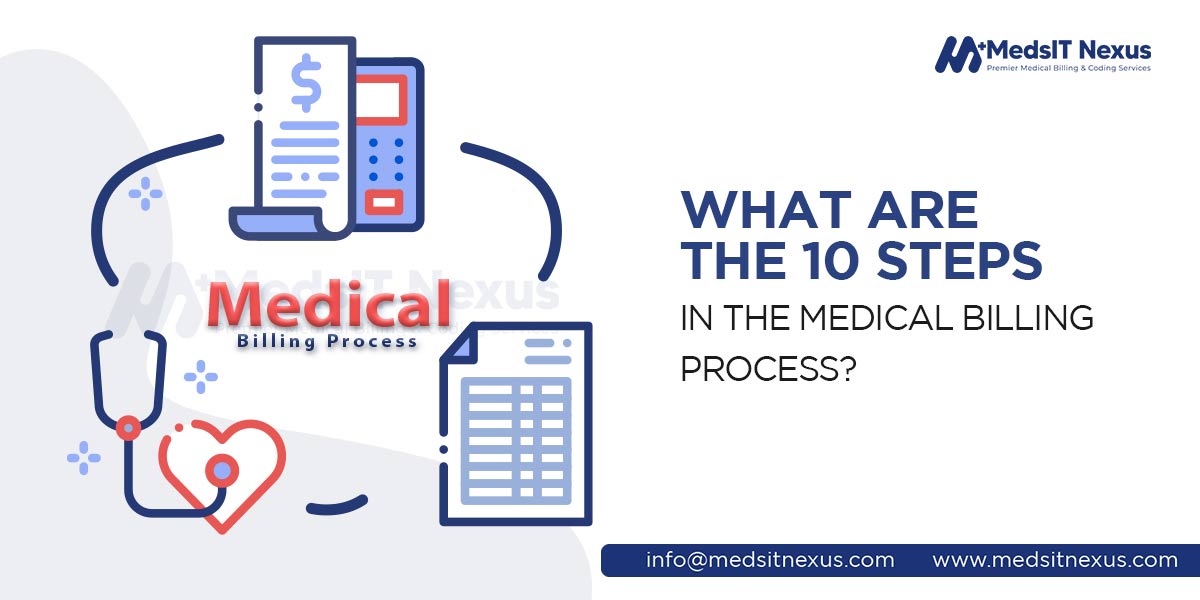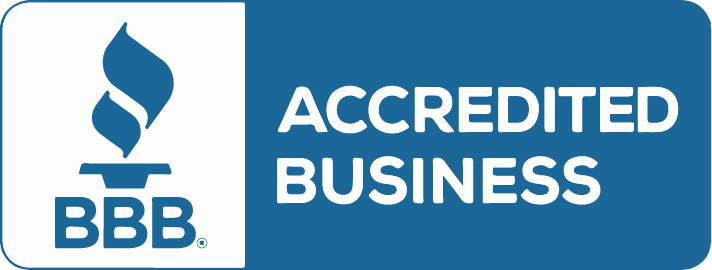
What are the 10 steps in the medical billing process?
Medical billing is the method of constructing medical claims to submit to insurance carriers to get reimbursement for health care services provided by practitioners. The biller converts medical services into a claim and submits it. The biller monitors the claim to confirm that the organization is obtaining payment for the efforts done by the clinician.
The medical billing process is a step-wise cycle that requires total concentration and accuracy at each step to get paid for the given treatment and to improve cash flow with every step. Any healthcare organization must know the essential and mandatory steps of medical billing. To help you run your billing process smoothly, 10 steps in the medical billing process are described below.
10 key steps of the successful medical billing process
The highlighted and necessary 10 key steps of a successful medical billing process are;
Patient registration
Any flow chart for medical billing begins with patient registration. The things included in a patient’s registration are;
- Collection of patients’ demographics such as name, address, date of birth, the reason for visit, etc.
- Collection of insurance information such as insurance provider’s name, policy number, and so on.
Before starting therapy, the front desk personnel makes an appointment for the patient with the doctor by collecting the necessary data from the patient. The medical billing process can never run successfully if a patient’s registration is not done correctly and professionally.
Insurance verification
Verifying with the insurance company before the services are rendered enables the determination of who will be responsible for paying for the services, the patient or the insurer. The insurance verification includes checking;
- Whether the patient’s insurance policy is active.
- Whether services are covered or not.
- Any authorization requirement.
The patient is informed that they will be responsible for paying for any services that are not covered.
Superbill creation
- When the patient check-in: As soon as the patient check-in;
- They will be requested to fill out the form for their file, or if it is a repeated visit, to verify or update the details and information already on file.
- Identification and co-payments are collected, along with a current insurance card.
- When the patients check out: After the patient leaves,
- A medical coder converts the visit’s medical reports into diagnostic and procedure codes.
- The information acquired is combined to create a “superbill or encounter report.”
- The superbill contains details about the provider and physician, the patient’s demographics and medical background, the services and procedures rendered, and the relevant diagnostic and procedure codes.
Charge entry/claim generation
- Before filing a claim with the insurance company, charges for the services performed are precisely included in the sheet. Medical data for patients are carefully tracked and charged with the proper amount.
- The medical biller will then create a medical claim. The biller must carefully review the claim once it has been produced to ensure that it complies with payer and HIPPA compliance criteria, including those for medical coding and format.
Claims audit
There are three levels that claims must pass when posted through Electronic Data Transfer (EDI) to be approved by the insurance. The levels are as follows:
- Scrubbing: Depending on the requirements, EHR Software will verify that all the areas on the claim form are covered and will look for specific coding-related errors.
- Clearing House: A third-party contractor in charge of EDI performs checks on the patient records, including the policy’s active date, the claimant’s name and DOB, and any potential coding problems.
- Insurance Rejection: Before approving a claim for adjudication, insurance runs a brief check, much like clearing houses, to make sure the patient data is accurate, the policy is active, and there are not any obvious coding errors.
Any errors or mistakes discovered at either of these levels result in claims being returned with a rejection message. A claim can clear these levels with checks and adjustments based on the information provided.
Claims submission
The next step is submitting the claim to the patient or their insurer after it has been examined for accuracy and compliance. The claim will often be sent electronically. Only error-free, clean claims will be sent via EDI so that reimbursement can be collected.
Once claims are submitted, the process of adjudication begins, which is a process through which insurers examine medical claims to decide if they are legitimate and legal and, if so, what amount of payment the provider will get. The claim could be approved or denied during this procedure. According to the insurance agreement, a claim will be approved and reimbursed, while inaccurate claims will result in denial.
Denial management
An essential component of revenue cycle management is denial management. It encourages booming total revenue by lowering insurance company denials. Claim denial management includes;
- Reviewing the denied claims on numerous topics and maintaining continuous follow-up
- Putting necessary measures in place to boost revenue collections and reduce denials.
- Lessen the likelihood of future denials, and identify the reasons for them.
- Evaluation and conduction of research on each denied claim to determine the best line of action.
- Quicker payouts for claims that were rejected in a short amount of time.
- Arrange rejected claims according to the payer, amount, and other factors to provide the highest possible payouts.
Patient statement preparation
The patient is invoiced for any unpaid fees following claim processing. The main things often included in the statement are;
- A complete account of the operations and services rendered
- The prices of the given services
- The amount covered by insurance
- The patient’s portion of the bill
AR calling
The caller for AR focuses on reducing rejections and boosting payment flow in RCM. Their prompt follow-up with the insurance provider facilitates payments. Some follow up on their ARs monthly while others weekly, depending on the age of AR days, to convert their due amount into revenue. The primary goal of the AR caller is to guarantee reimbursement for the treatments provided by healthcare professionals. They have to share accurate patient information and correct any mistakes. They send reminders to patients or their insurance providers about their outstanding payments.
Payment posting
Once the insurance company chooses to pay the claims, they issue the money through a check or an electronic fund transfer. They also share a description known as an Explanation of Benefits (EOB) or an Electronic Remittance Advice (ERA). It is the responsibility of the professionals controlling the payment to publish the entries in the EHR and count the payments received.
How MedsIT Nexus can help you in practice management?
Medical billing is a challenging and necessary component of today’s healthcare system. Handling and managing this process is a complicated task requiring experience to navigate each step successfully. But you should not be concerned about it because MedsIT Nexus Medical billing and coding services are 24/7 available for you with all the latest technologies and software.
Our company makes every single effort at every step to run your healthcare organization’s billing process professionally and increase your reimbursement by up to 30%. We deal with your medical billing process skillfully. Our HIPAA-compliant services efficiently provide security for your patients’ information. Moreover, having been providing medical billing services for more than five years, we help our partners improve their overall profit and reduce their burden.





